| An Inventory of Marx Playset Figures and Accessories Manufactured from 1951 to 1979 Wild West Page 8 - Horses, Cattle, and Other Animals |
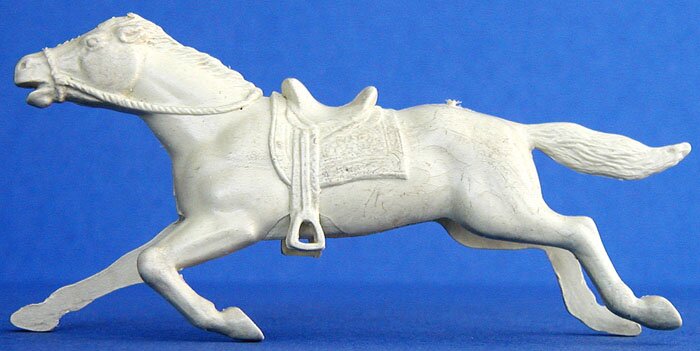 |
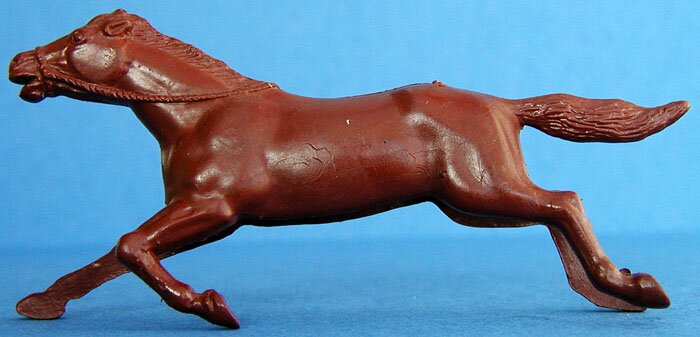 |
| 1. Running cowboy horse, saddled | 2. Running Indian horse, bareback |
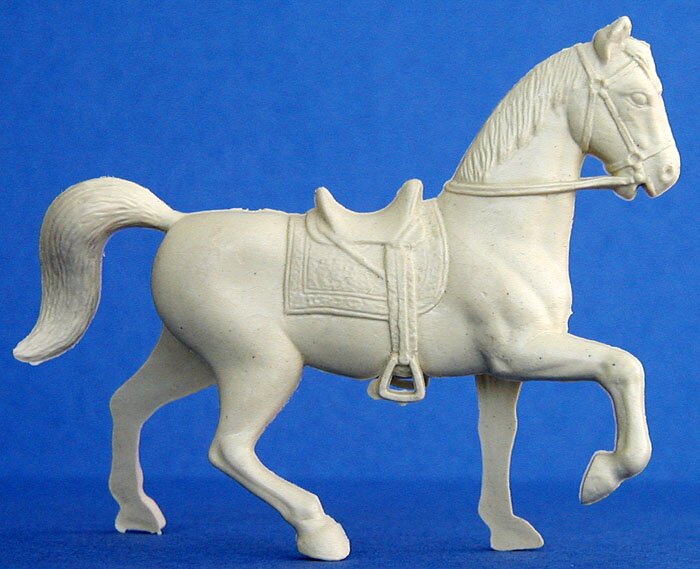 |
|
| 3. Cavalry horse, prancing |
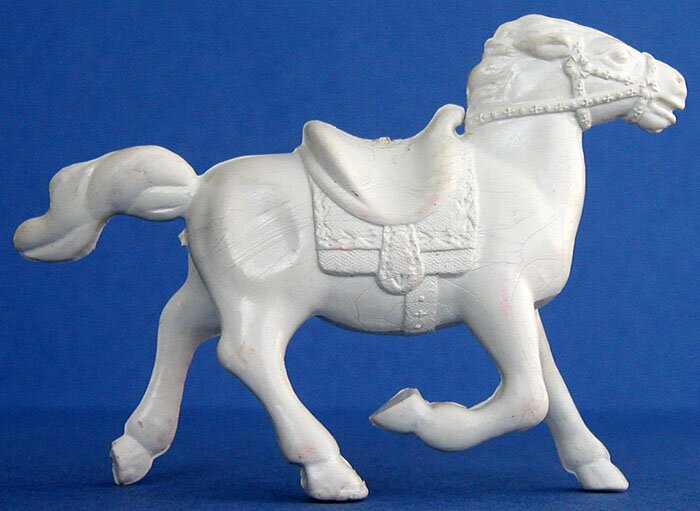 |
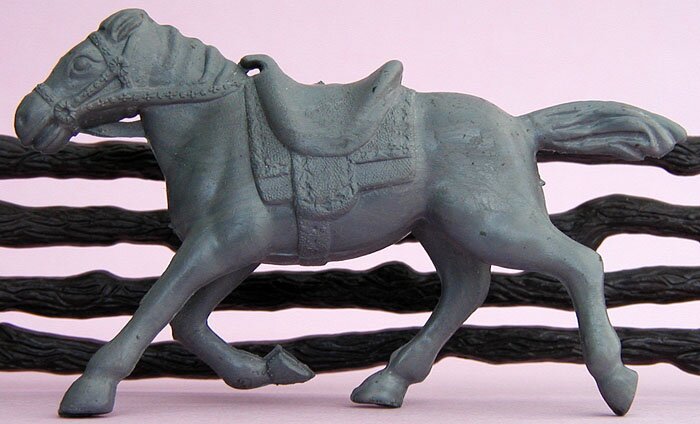 |
| 1. Running horse, curly tail | 2. Running horse, straight tail |
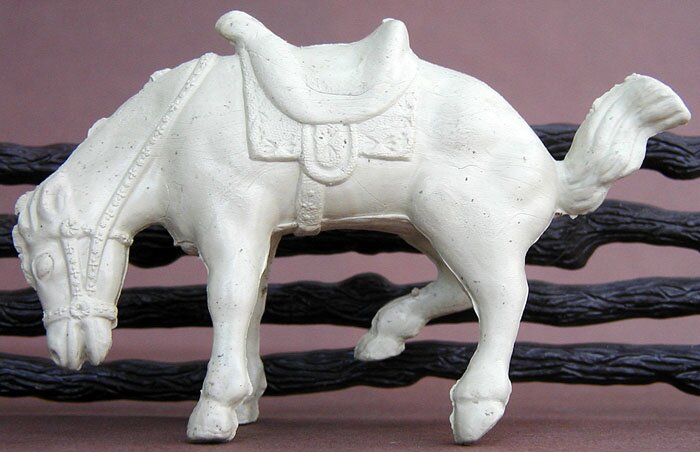 |
 |
| 3. Bucking horse | 4. Running horse, bareback (mustang) |
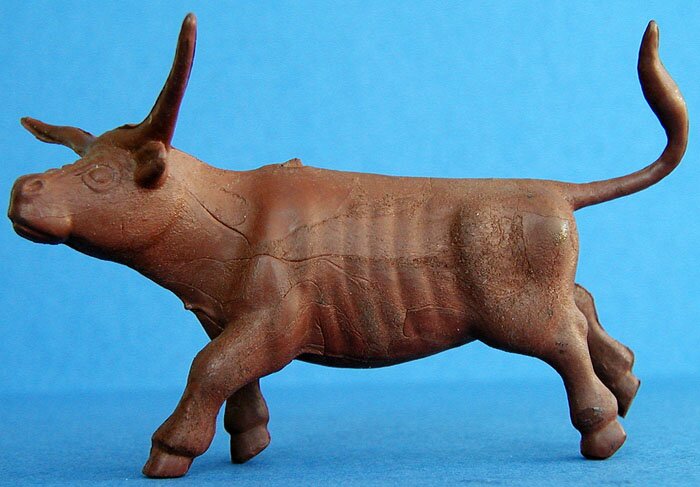 |
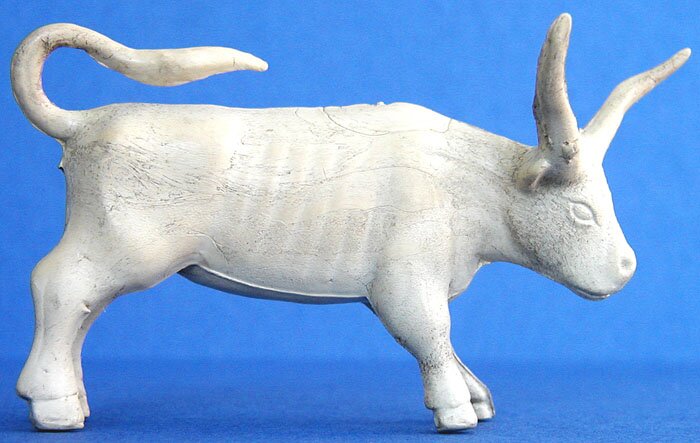 |
| 5. Steer, tail up | 6. Steer, tail curved over back |
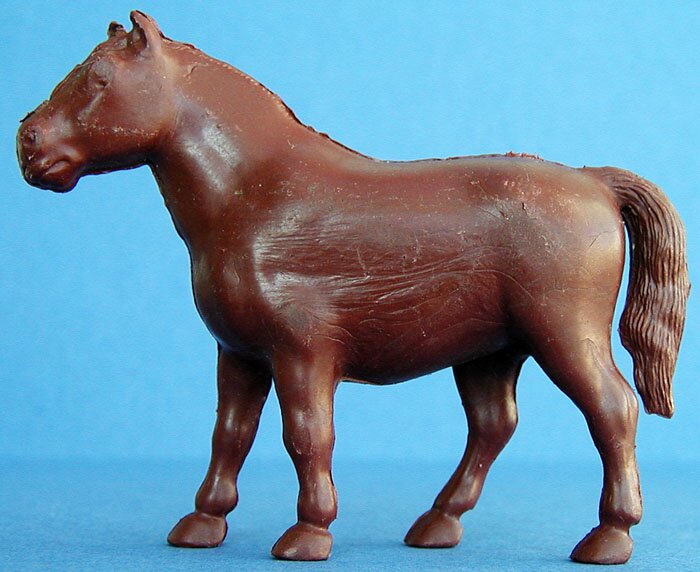 |
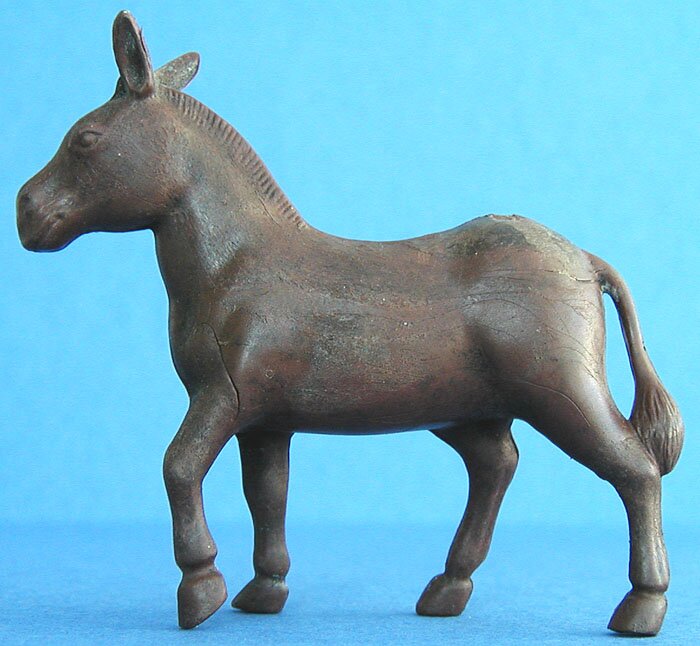 |
| 1. Draft horse | 2. Mule |
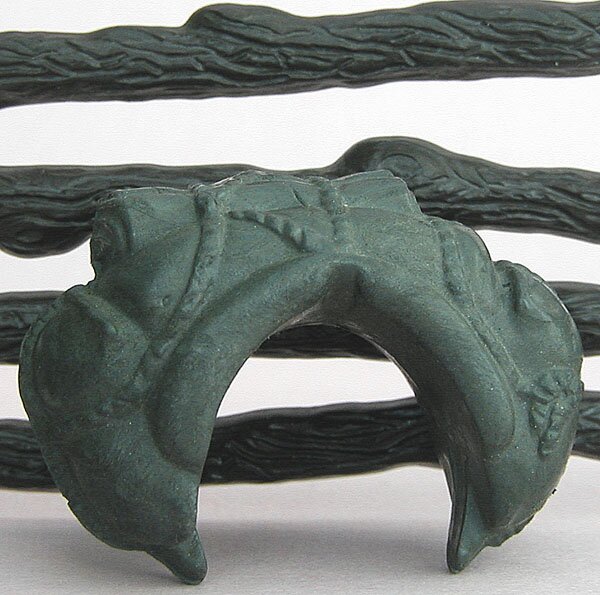 |
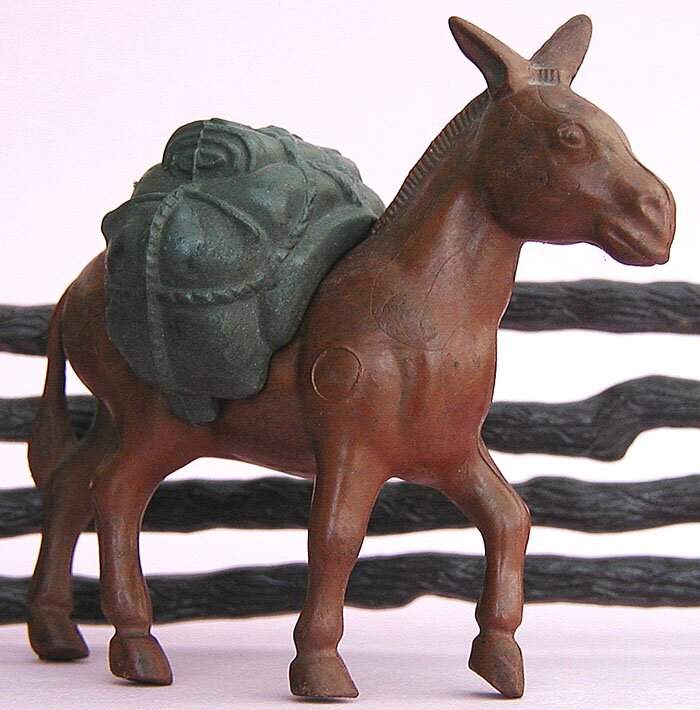 |
| 3. Pack for mule | Mule with pack on back |
| Recent Price Lines I have noticed | ||||
| Mule with pack | $36 | June 2012 | Ebay | |
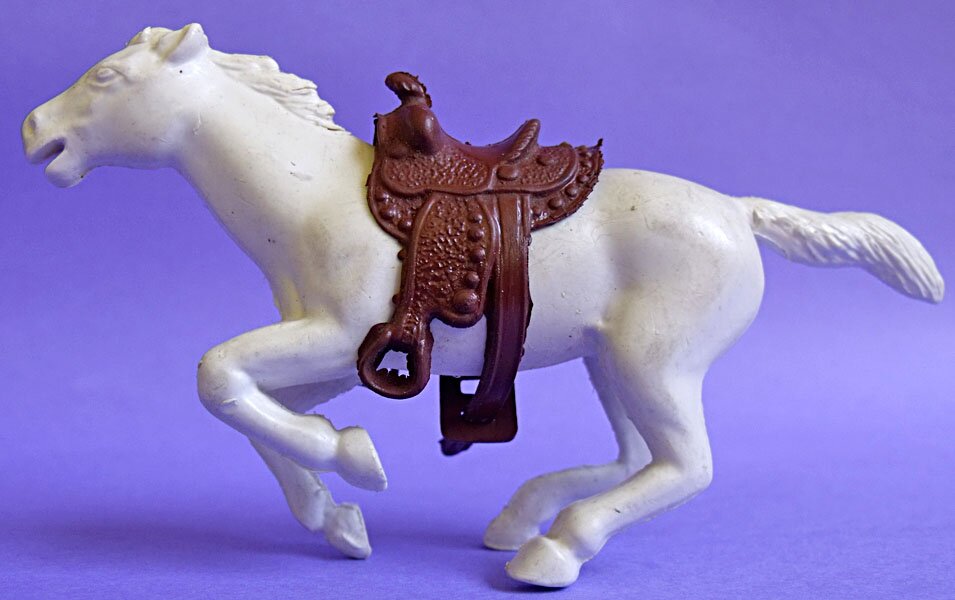 were difficult for kids to attach to horses and easily lost or broken. Perhaps as a result, these were Marx' only horses that did not have the sadlles and reins molded directly on them. They are particularly popular among collectors today and, as a result, will cost $15 or so. The white running horse (at right) is especially hard to find -- I have heard that it came in this color only in a small set of Lone Ranger figures available from a cereal mail-in offer -- and can cost closer to $30.
were difficult for kids to attach to horses and easily lost or broken. Perhaps as a result, these were Marx' only horses that did not have the sadlles and reins molded directly on them. They are particularly popular among collectors today and, as a result, will cost $15 or so. The white running horse (at right) is especially hard to find -- I have heard that it came in this color only in a small set of Lone Ranger figures available from a cereal mail-in offer -- and can cost closer to $30.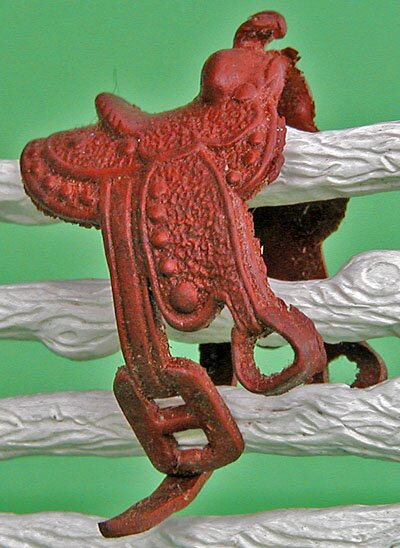 |
 |
| 1. Cowboy saddle | 2. Reins |
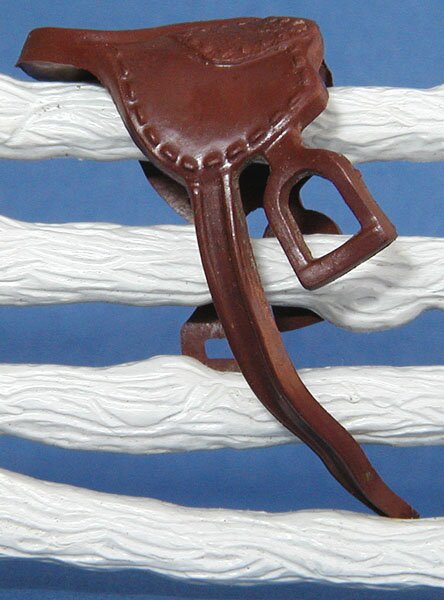 |
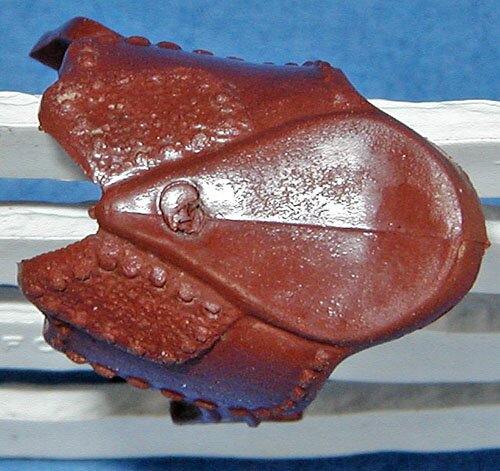 |
| 1. Cavalry saddle | Top of cavalry saddle |
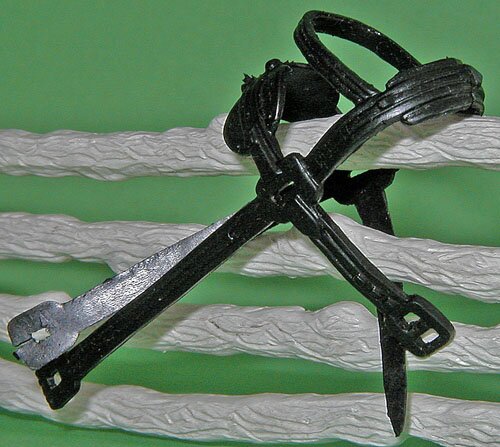 |
| 1. Harness for draft horse pulling wagon |
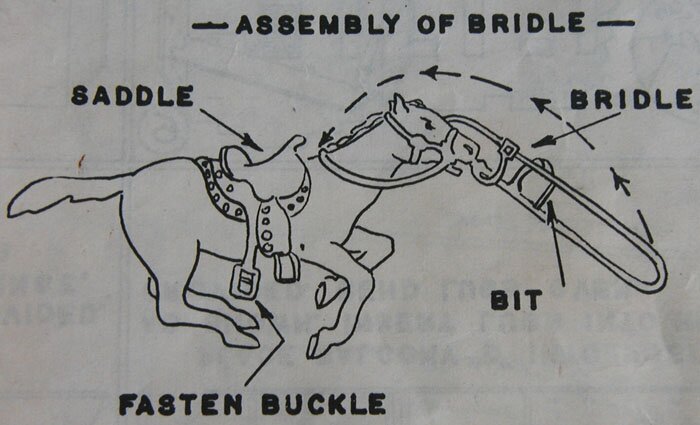
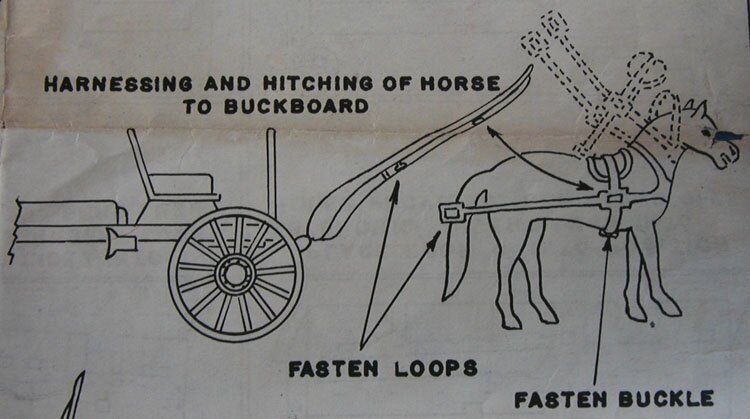
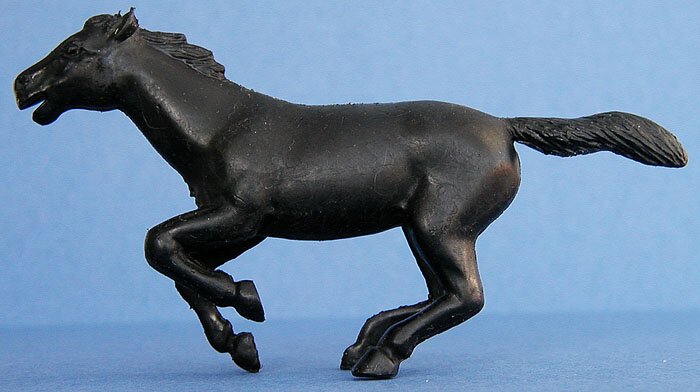 |
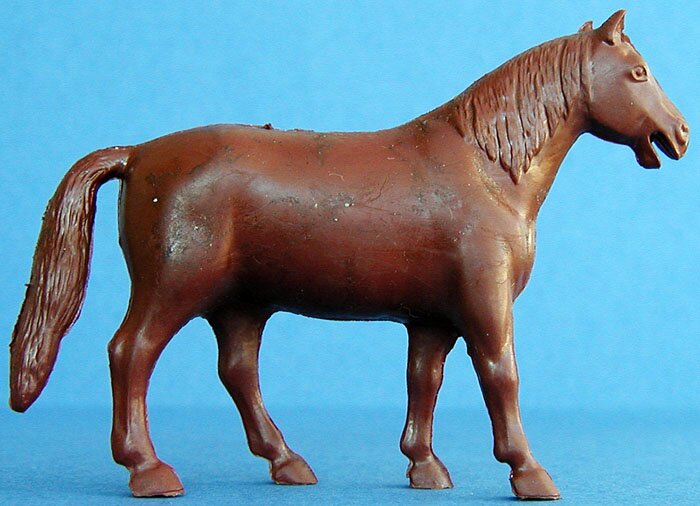 |
| 1. Running horse (separate saddle) | 2. Wagon horse |
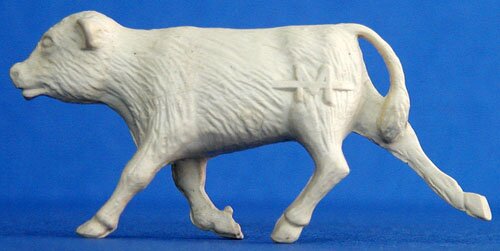 |
|
| 3. Calf with "M" brand |
 |
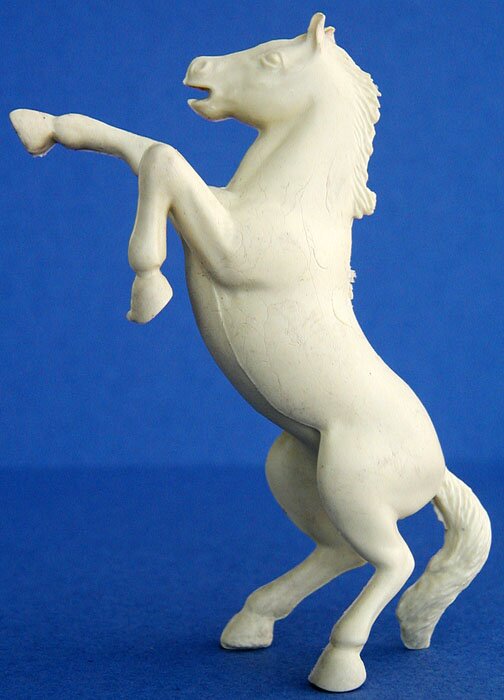 |
| 1. Bucking horse (separate saddle) | 2. Rearing horse (separate saddle) |
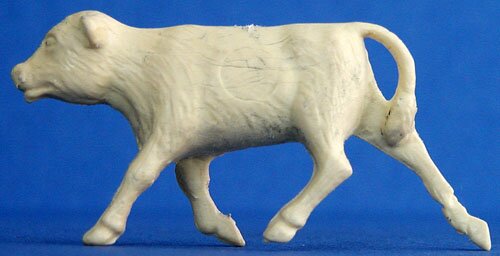 |
|
| 3. Calf without brand |
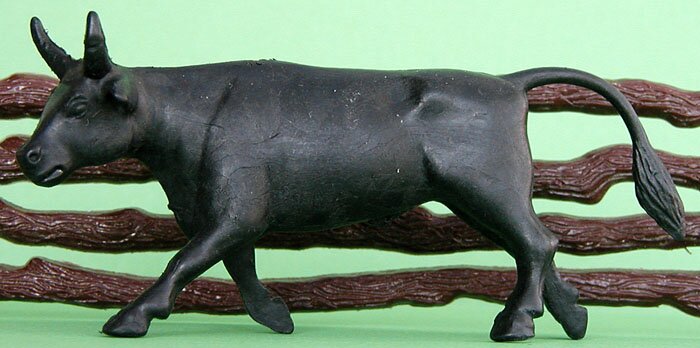 |
| 1. Short-horn steer |
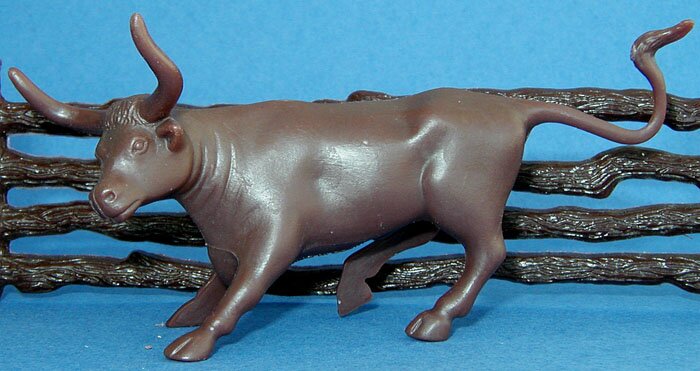 |
| 2. Long-horn steer (snorting) |
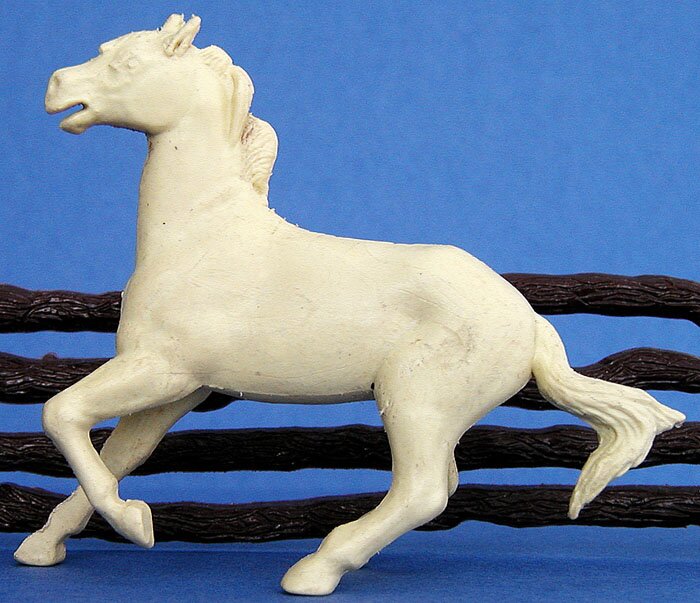 |
| 3. Stopping horse |
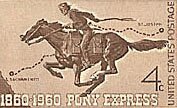 for dozens of playsets. Despite that, most of the animals have drawbacks. For example, as great as the running horse looks, many have difficulty remaining upright. The stopping horse has a tendency -- espcially with a rider -- to tilt backwards and sit on its hind legs and tail, with its forelegs in the air. This is so common that I am sure some people believe that is the way it is supposed to stand. The rearing horse -- as with the 60mm version -- is almost impossible to stand upright with a rider, as Marx made no figures posed to ride a horse at such an angle. The options are to either 1) mount the rider in a normal riding position so that the horse and rider appear to be ready to flip over backwards at any moment (though it is often impossible to keep the horse standing in such a pose) or 2) mount the rider as if he or she is leaning forward to maintain balance, which results in an appearance that the rider is ready to slip off the back end of the horse at any moment.
for dozens of playsets. Despite that, most of the animals have drawbacks. For example, as great as the running horse looks, many have difficulty remaining upright. The stopping horse has a tendency -- espcially with a rider -- to tilt backwards and sit on its hind legs and tail, with its forelegs in the air. This is so common that I am sure some people believe that is the way it is supposed to stand. The rearing horse -- as with the 60mm version -- is almost impossible to stand upright with a rider, as Marx made no figures posed to ride a horse at such an angle. The options are to either 1) mount the rider in a normal riding position so that the horse and rider appear to be ready to flip over backwards at any moment (though it is often impossible to keep the horse standing in such a pose) or 2) mount the rider as if he or she is leaning forward to maintain balance, which results in an appearance that the rider is ready to slip off the back end of the horse at any moment.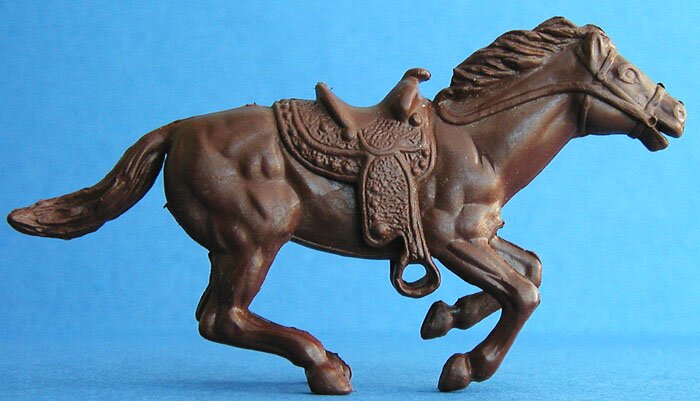 |
 |
| 1. Running horse | 2. Stopping horse |
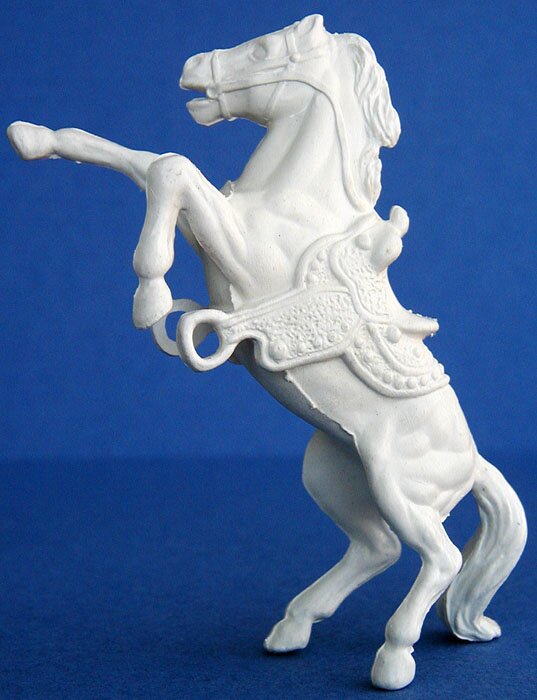 |
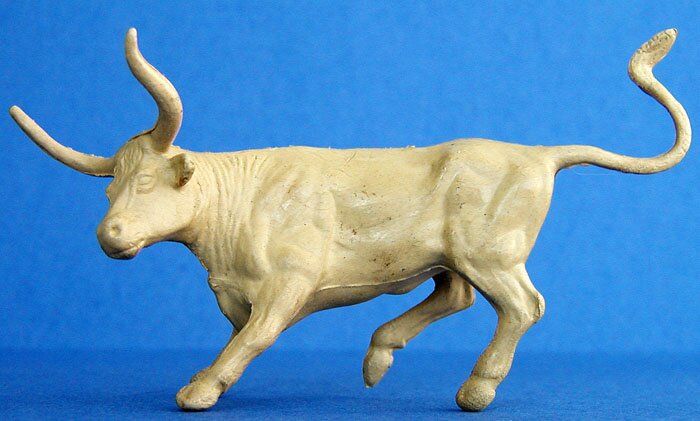 |
| 3. Rearing horse | 4. Long horn steer (snorting) |
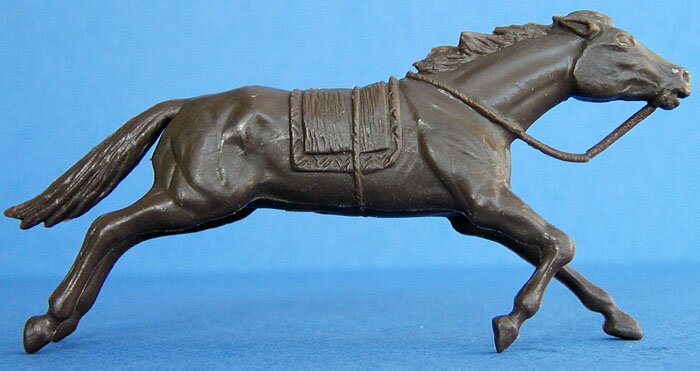 |
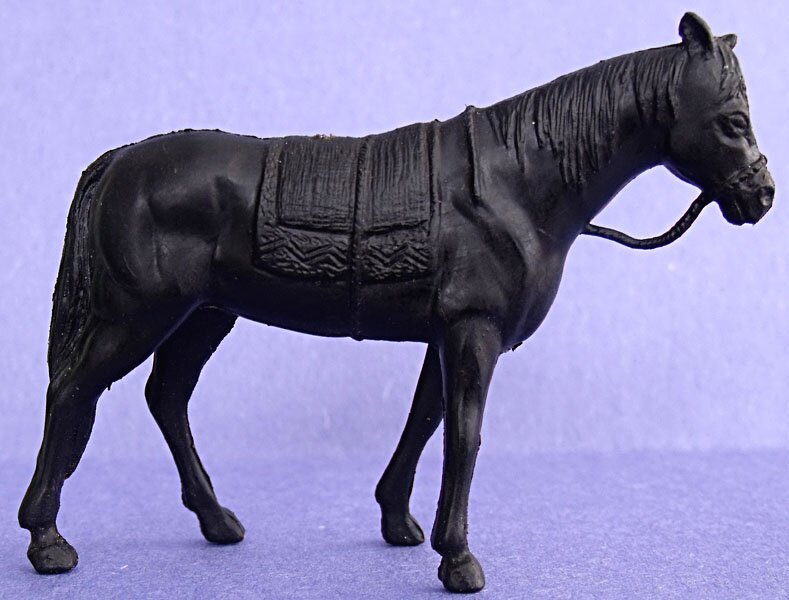 |
| 4. Running Indian horse with blanket Note broken rein. |
5. Standing Indian horse Black is a hard color to find; the horse is found more often in brown, cream, or white. This one with reins intact cost me $18. |
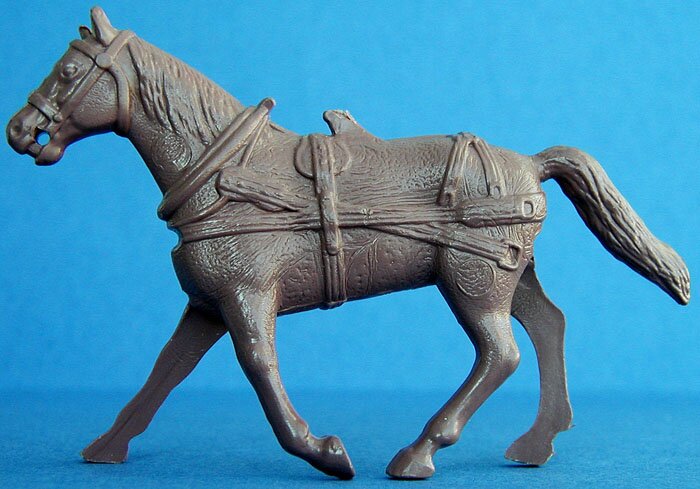 |
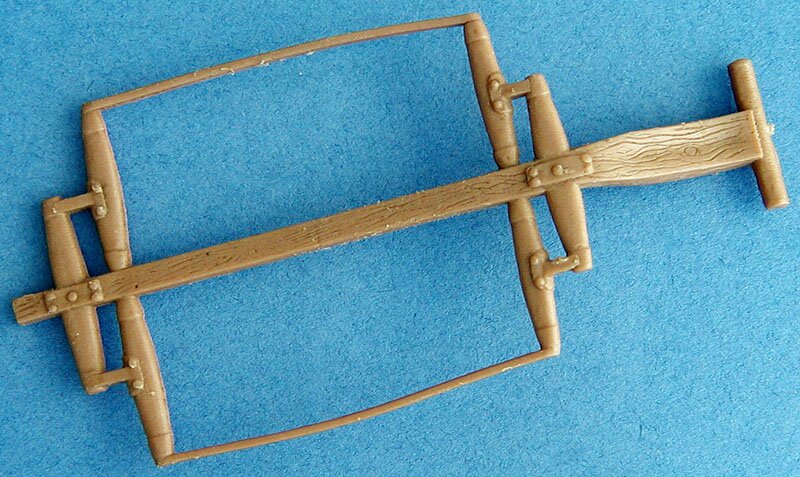 |
| 1. Harness Horse | 2. Hitch used for new wagons CTS has added a small hole to the front of its re-issue hitches and created a connecting hitch so that more than two horses can be displayed pulling a wagon. |
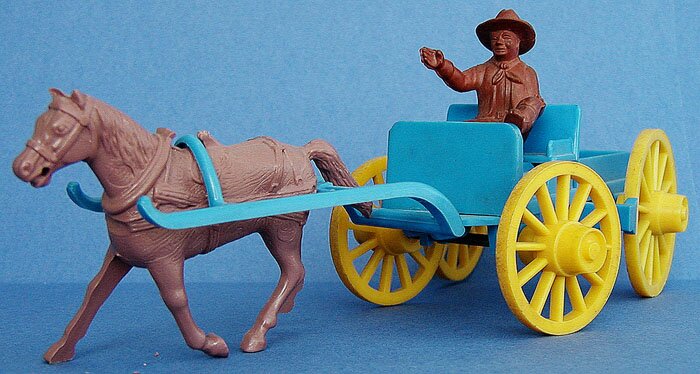 |
 |
| Horse pulling revised older-style wagon with loop | Horses pulling new 54mm covered wagon Photo is of re-issued wagon and figures. |
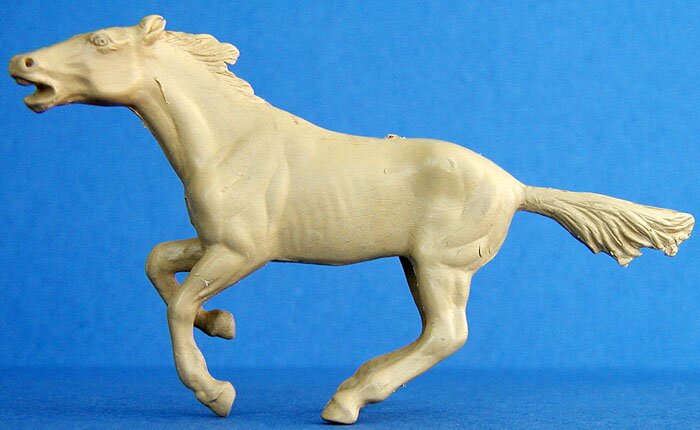 |
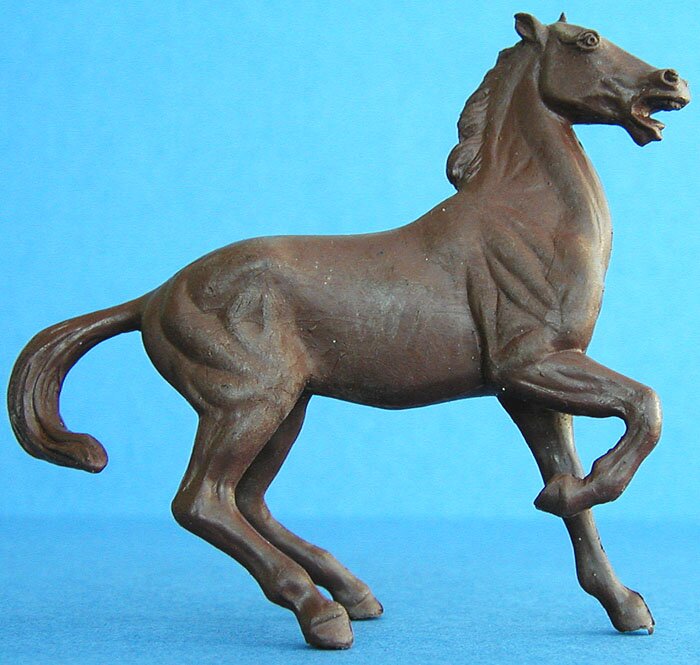 |
| 1. Running horse | 2. Standing horse |
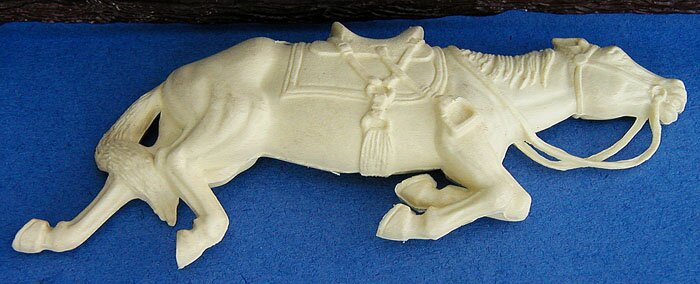 |
| 1. Lying down horse |
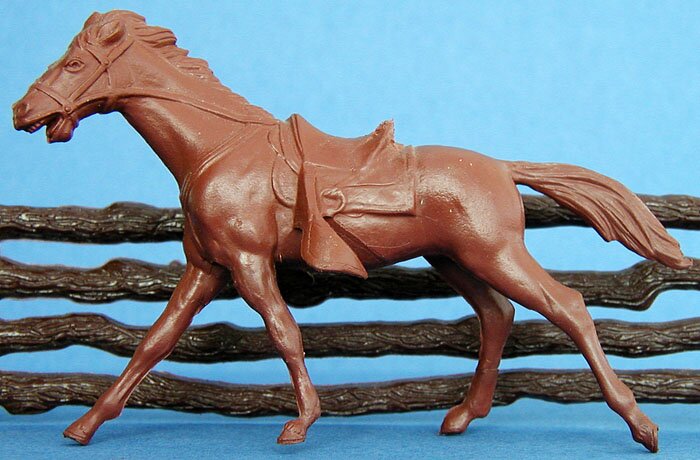 |
| 1. Cavalry horse |
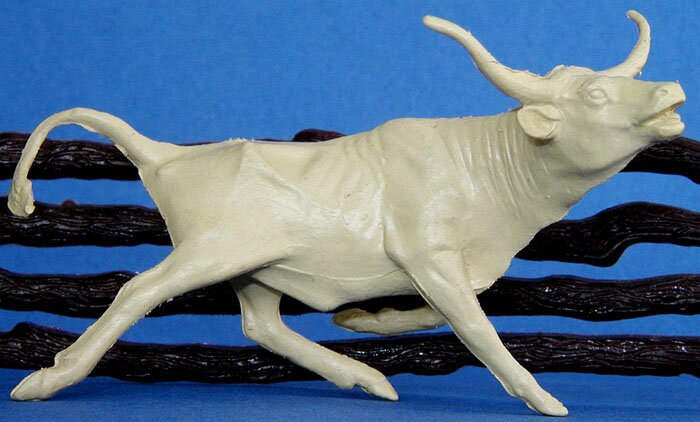 |
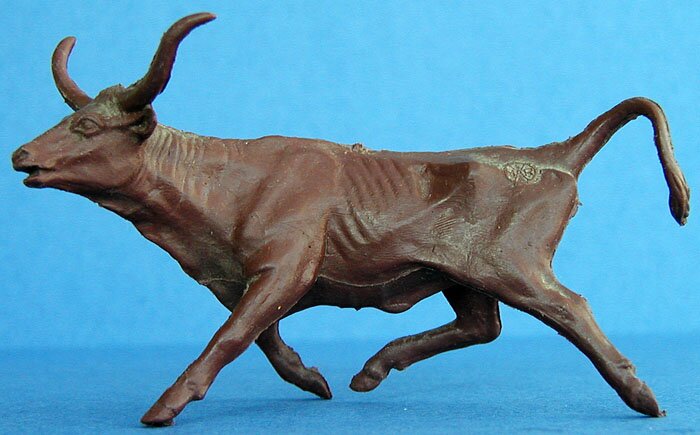 |
| 1. Skinny long horn, head right | 2. Skinny long horn, head left (Photo is of a re-issue.) |
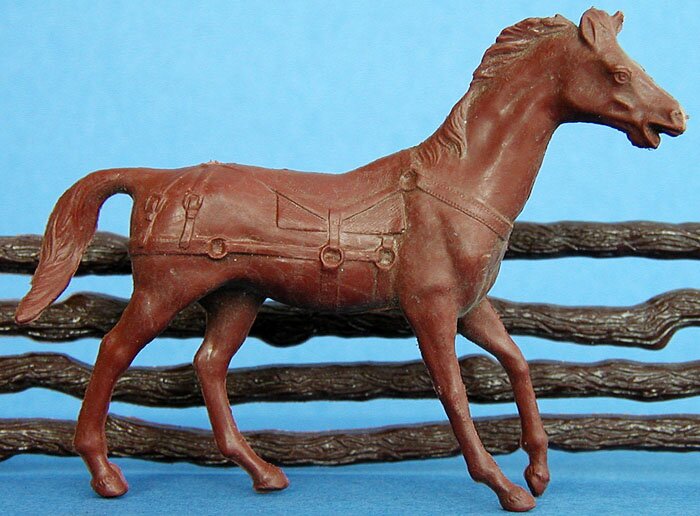 |
 |
| 1. Pack horse | 2. Lead (Lead shown is a re-issue) |
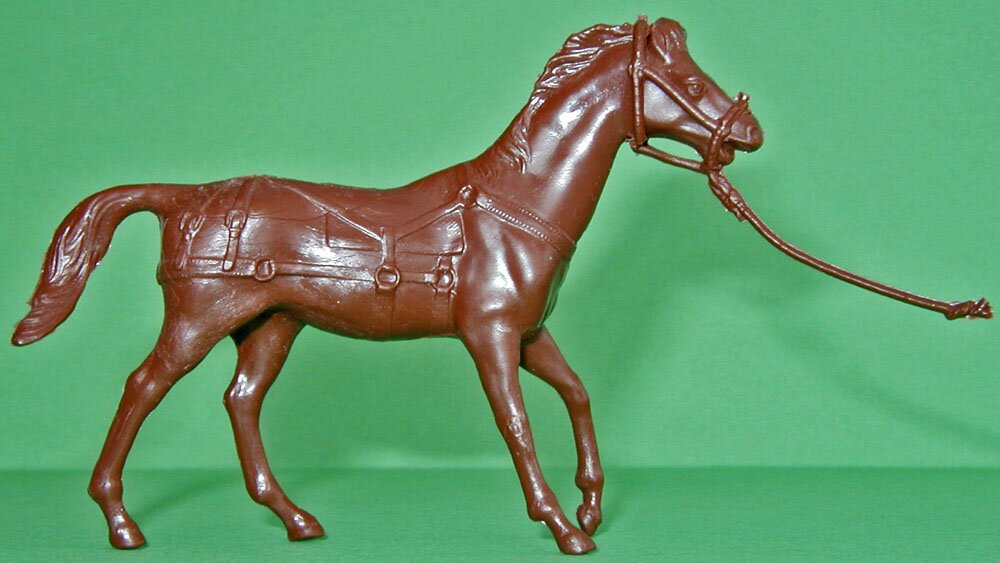 |
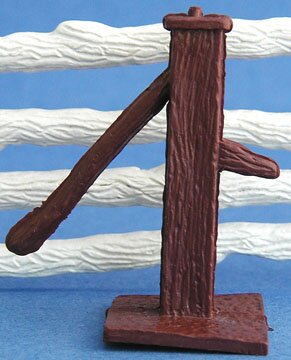 |
| Pack horse with lead attached (Horse and bridle in this photo are re-issues) |
5. Pump |
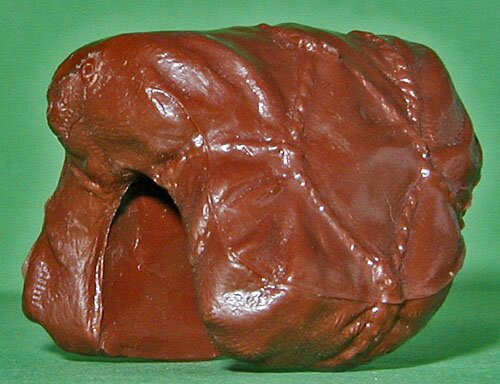 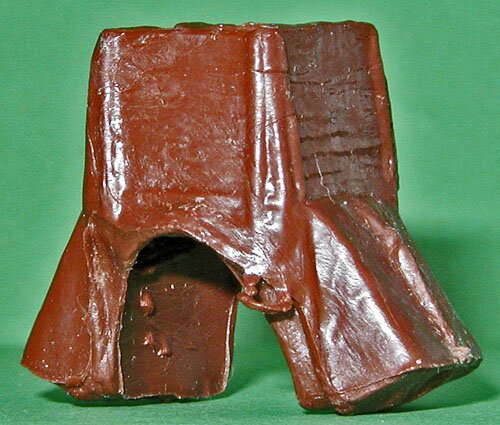 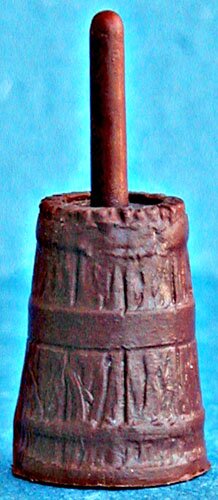 |
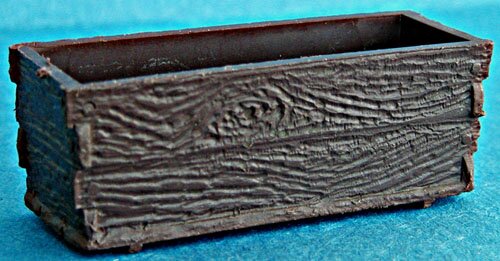 |
| 3. Pack without box (re-issue) 4. Pack with box (note loop near bottom of right front corner of box) (re-issue) 7. Butter churn |
6. Water trough |
 |
|
| Outer side of oxen. Oxen on left is the left oxen as seen by the driver. Oxen on right is the right oxen as seen by driver. (re-issue figures) |
|
 |
|
| Inside of oxen with holes for hitch showing, positioned same as in first photo. (re-issue figures) |
|
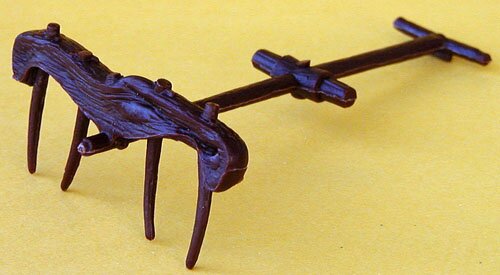 |
|
| Hitch (or yoke) for oxen. (PL-1030A) (re-issue) |
|
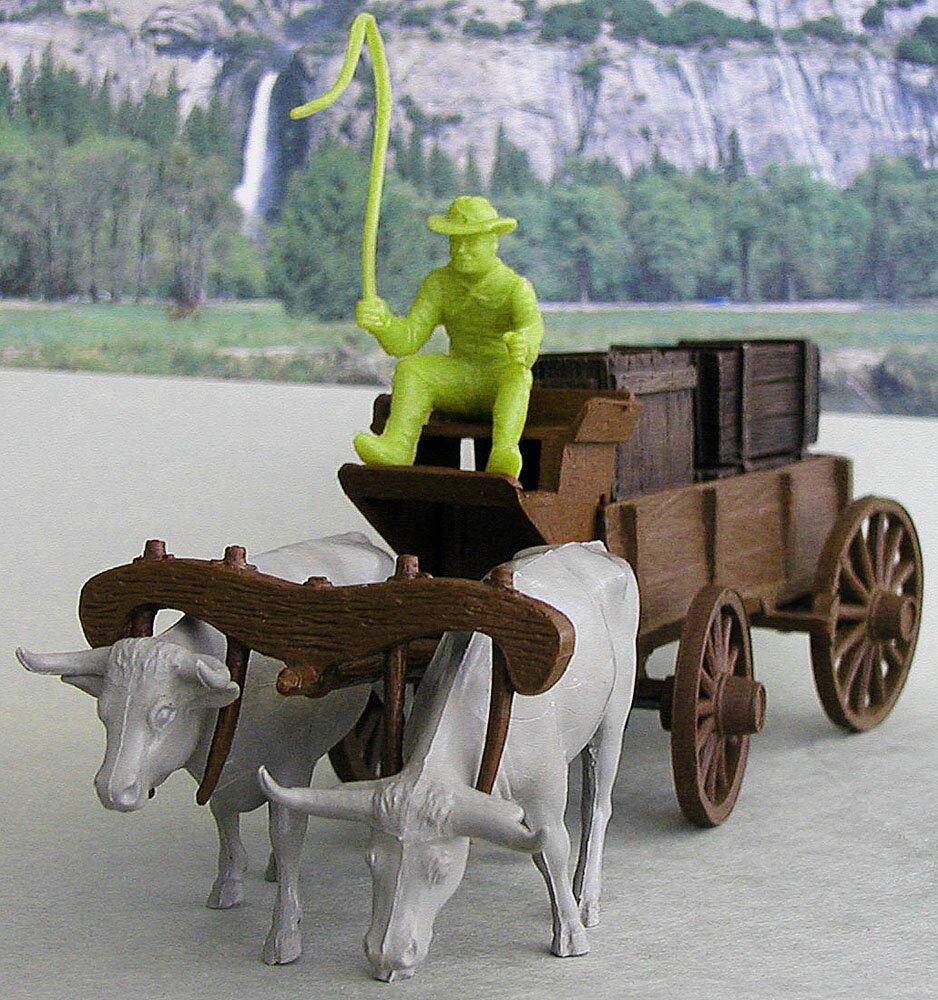 |
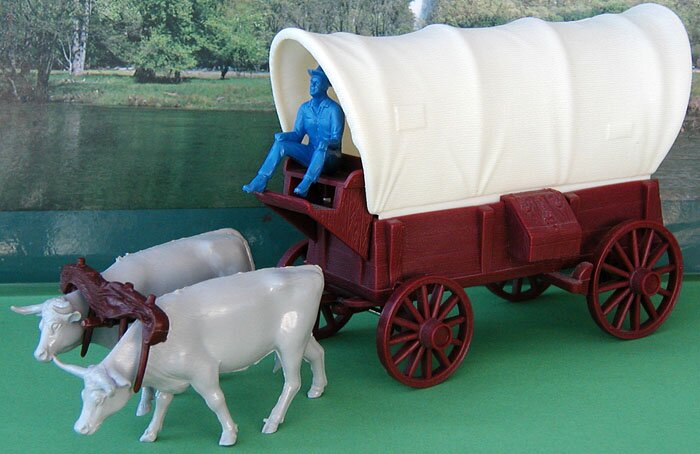 |
| Hitched oxen team (original) (Wagon is conestoga wagon with top removed. Boxes in wagon are made by Pegasus.) |
Hitched oxen team (re-issue) |
| Recent Price Lines I have noticed | ||||
| Original wagon pulled by oxen with wagon driver with whip | $225 | Sept 2011 | Ebay | |
| One ox | $37 | June 2012 | Ebay | |
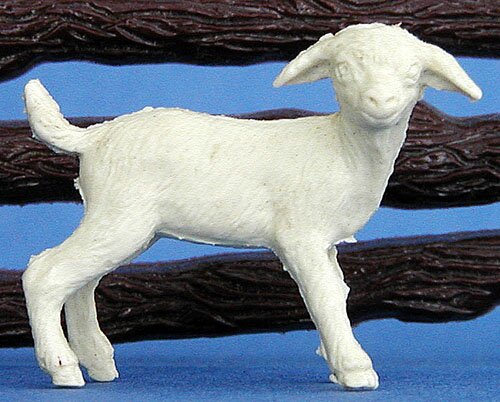 |
 |
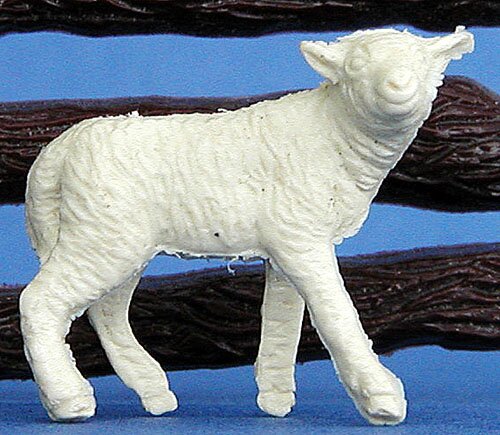 |
| 1. Baby goat - tail up | 2. Lamb bleating | 3. Lamb looking right |
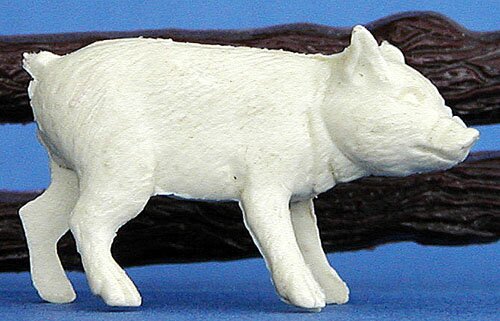 |
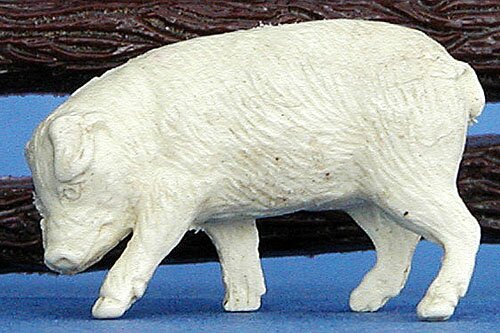 |
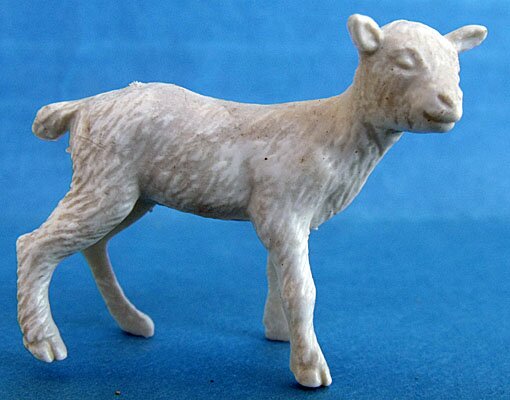 |
| 4. Piglet looking ahead | 5. Piglet looking down | 6. Baby goat - tail down |
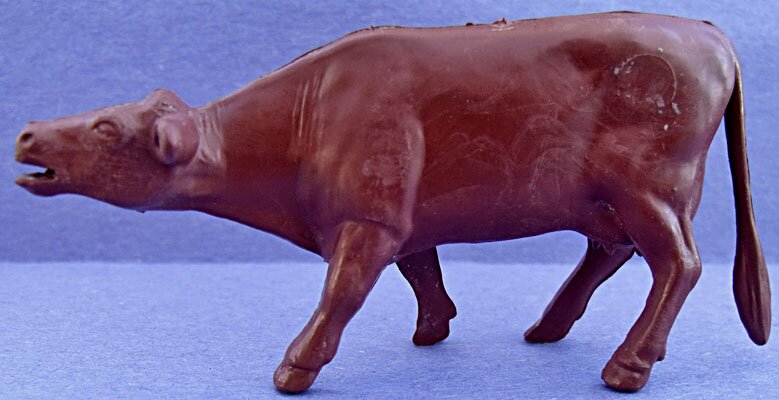 |
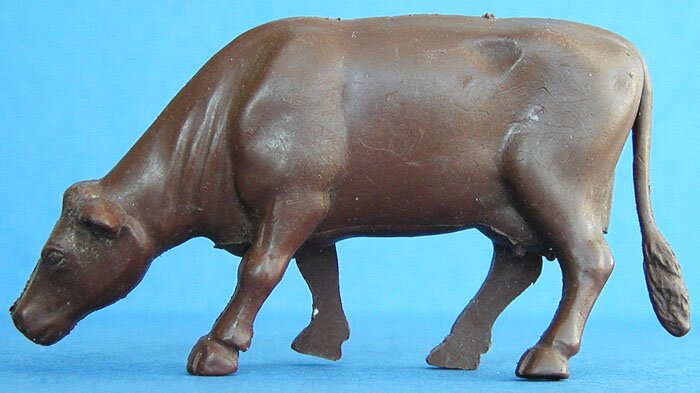 |
| 1. Cow mooing (from Wagon Train set) |
2. Cow eating (from farm set) |
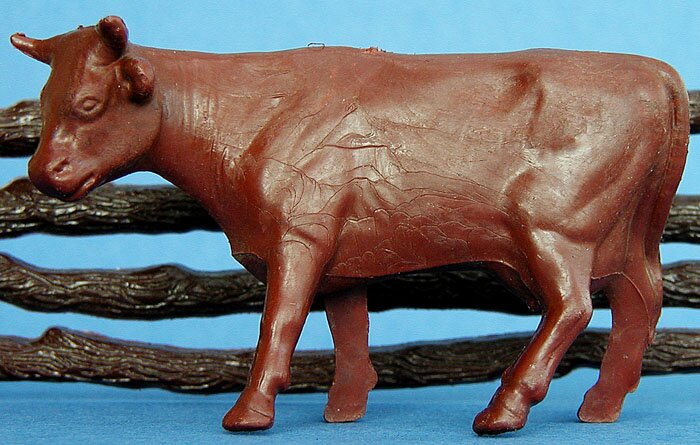 |
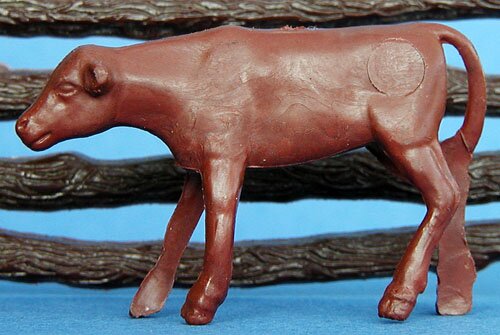 |
| 3. Cow with head up | 4. Calf |
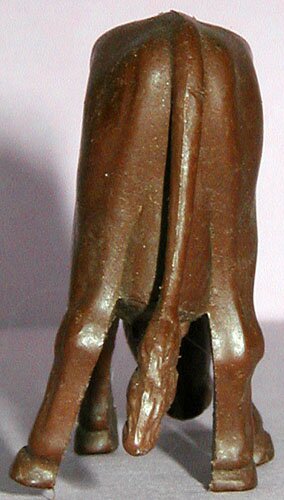 |
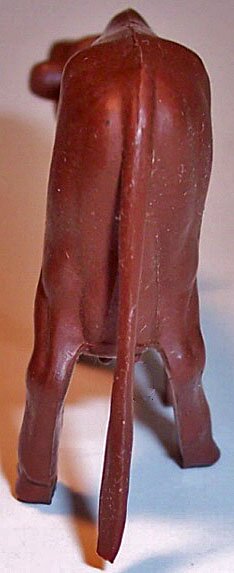 |
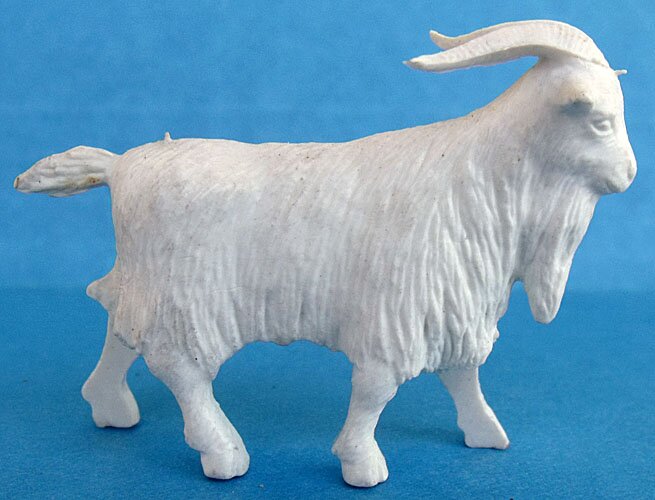 |
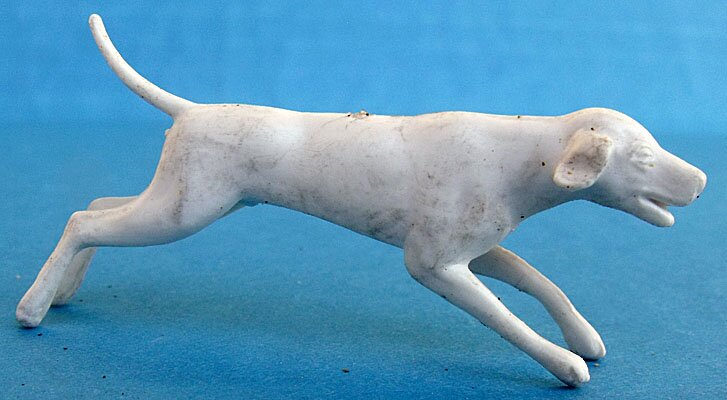 |
| Goat | Dog |
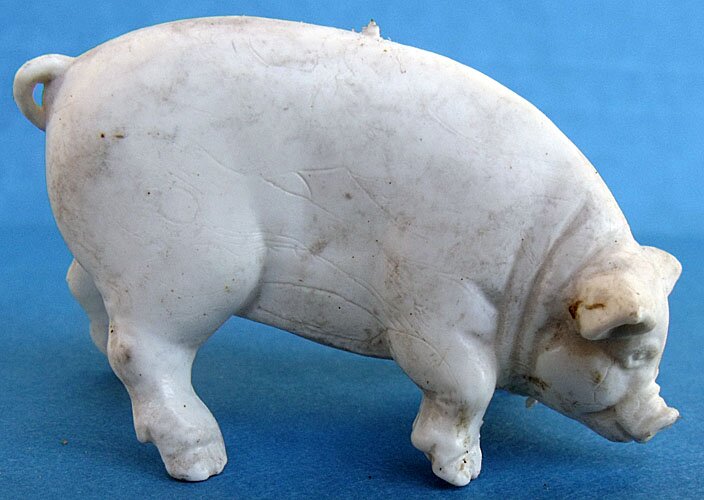 |
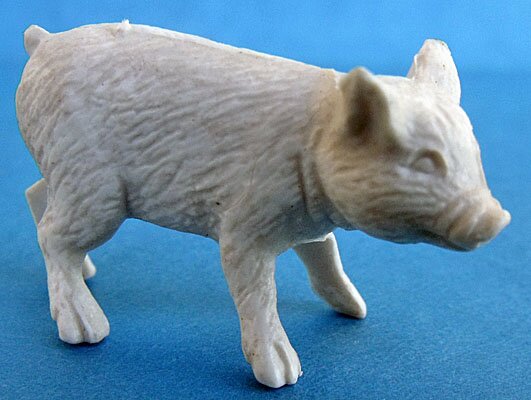 |
| Pig | Piglet |
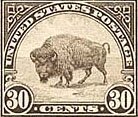 circus playsets; they did not lift a finger to produce a buffalo that fit the 54mm scale. So while 54mm buffalo should stand 45mm to 54mm tall (five to six feet) the Marx buffalo is a puny 35mm tall. Placed beside a Marx cowboy or Indian figure, the company's buffalo looks ridiculously small. I'm still looking for a correctly-sized buffalo for my Marx figures. I believe the ones that a current manufacturer (was it Barzso?) produced a year or two back might have been good, but they halted production after very brief sales due to the difficulty in producing them.
circus playsets; they did not lift a finger to produce a buffalo that fit the 54mm scale. So while 54mm buffalo should stand 45mm to 54mm tall (five to six feet) the Marx buffalo is a puny 35mm tall. Placed beside a Marx cowboy or Indian figure, the company's buffalo looks ridiculously small. I'm still looking for a correctly-sized buffalo for my Marx figures. I believe the ones that a current manufacturer (was it Barzso?) produced a year or two back might have been good, but they halted production after very brief sales due to the difficulty in producing them. |
| 1. Buffalo |
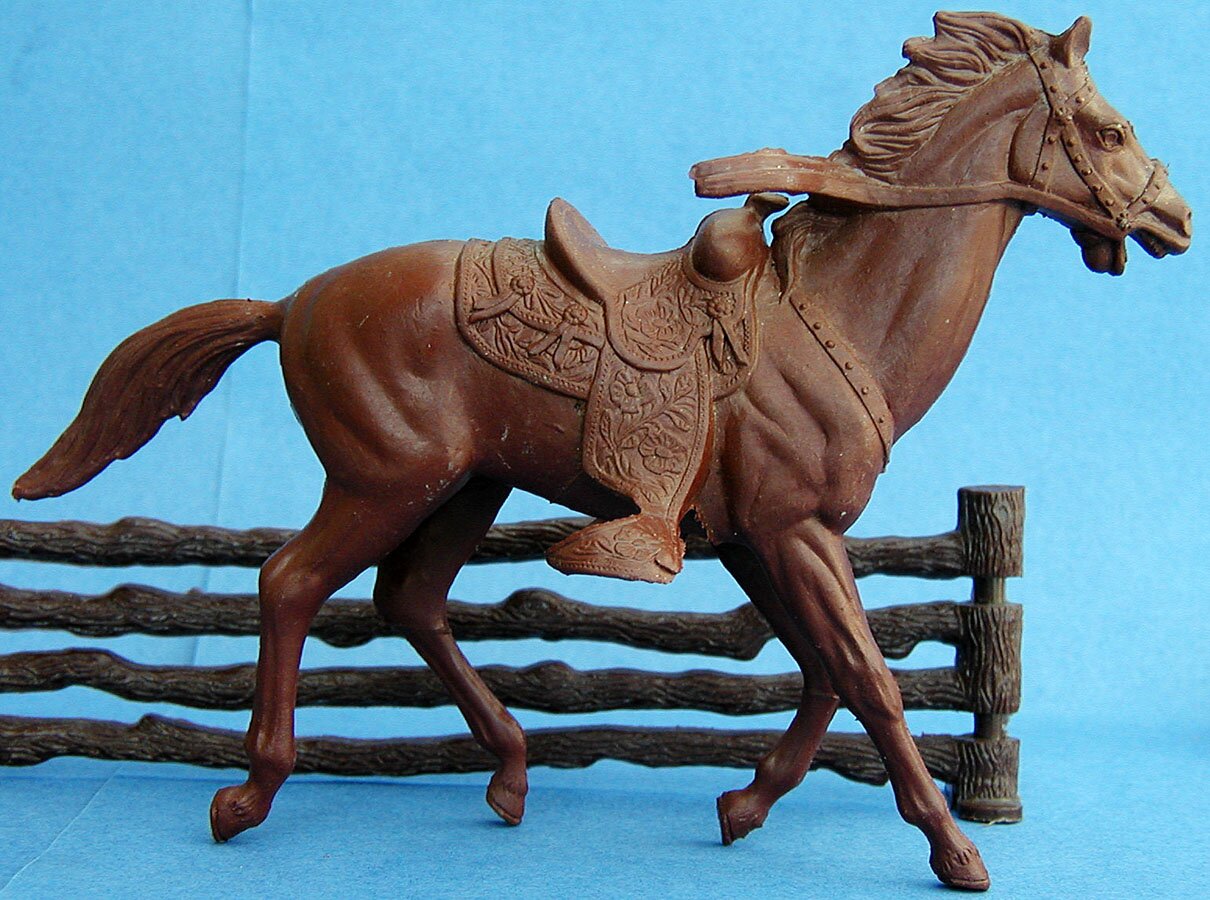 |
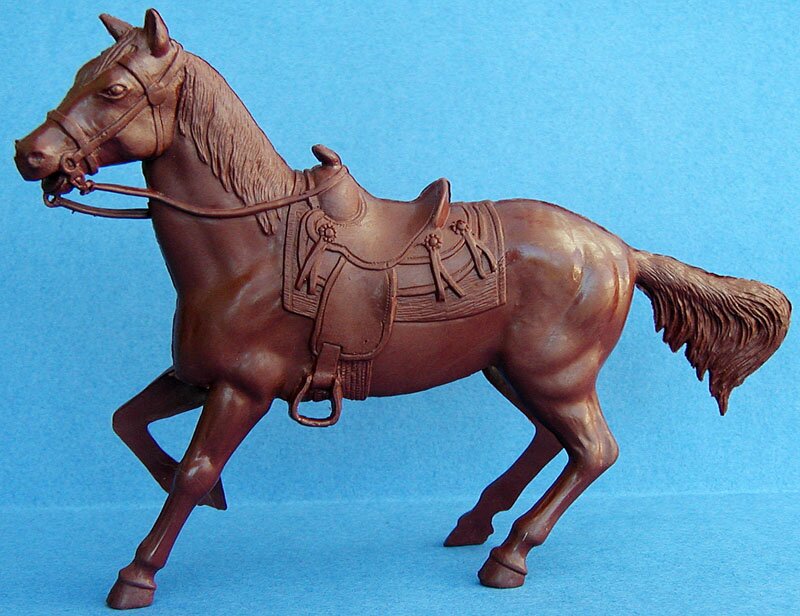 |
||||||||||
| 1. Horse for 4- or 5-inch scale figures - just over 4 inches tall | 2. Horse for 4- or 5-inch scale figures - 4-1/2 inches tall | ||||||||||
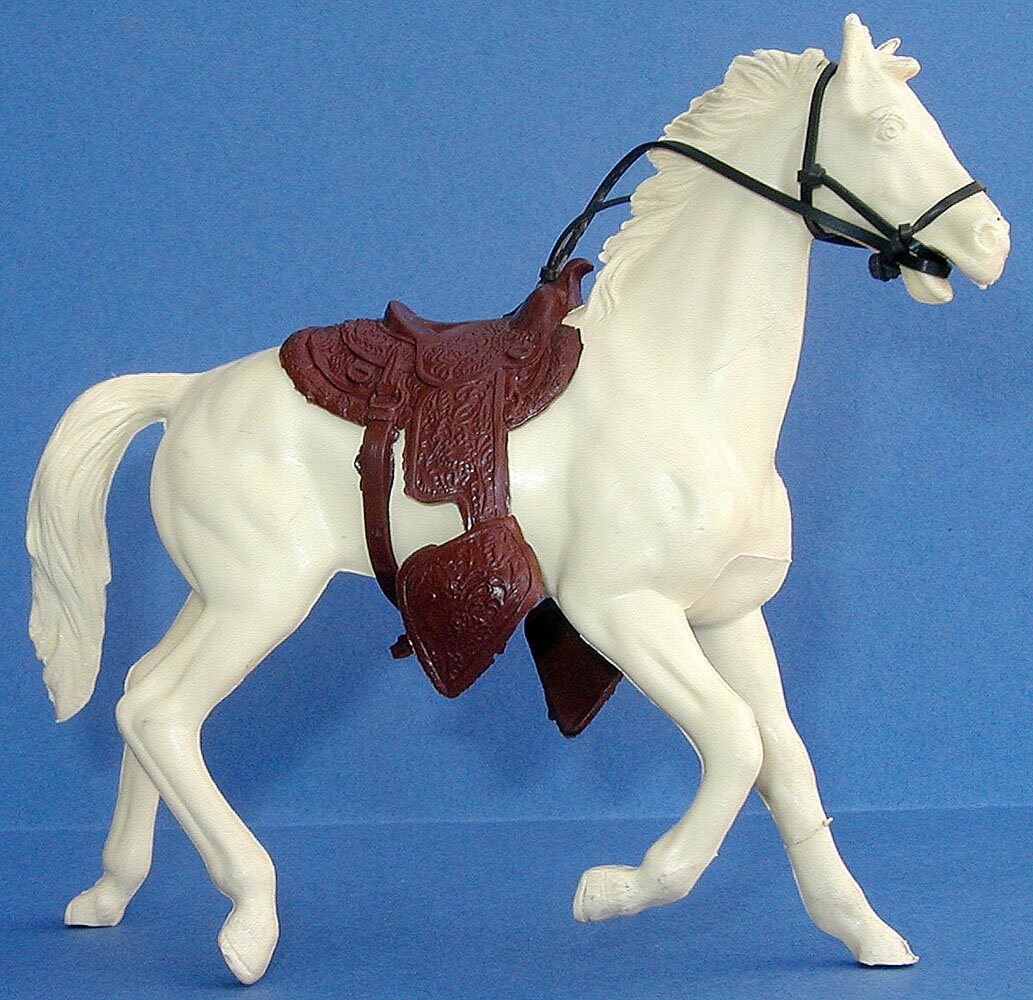 |
|||||||||||
| 3. Horse for 5-inch Daniel Boone and Roy Rogers figures - 5 inches tall | |||||||||||
|
|||||||||||
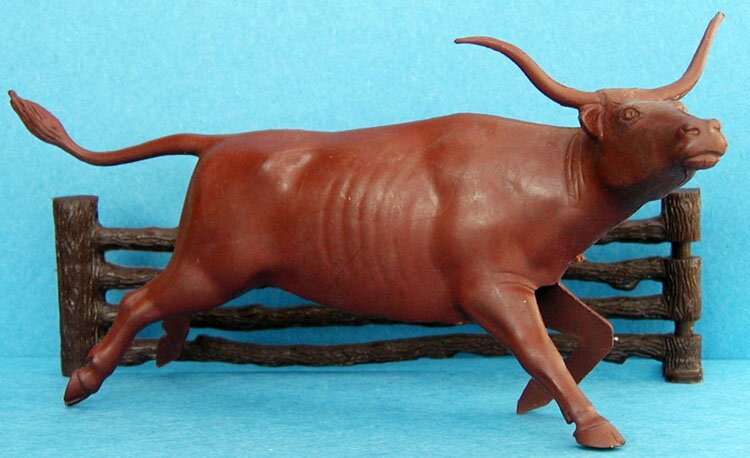 |
|||||||||||
| 4. Steer in 4- or 5-inch scale - 3-1/2 inches tall | |||||||||||
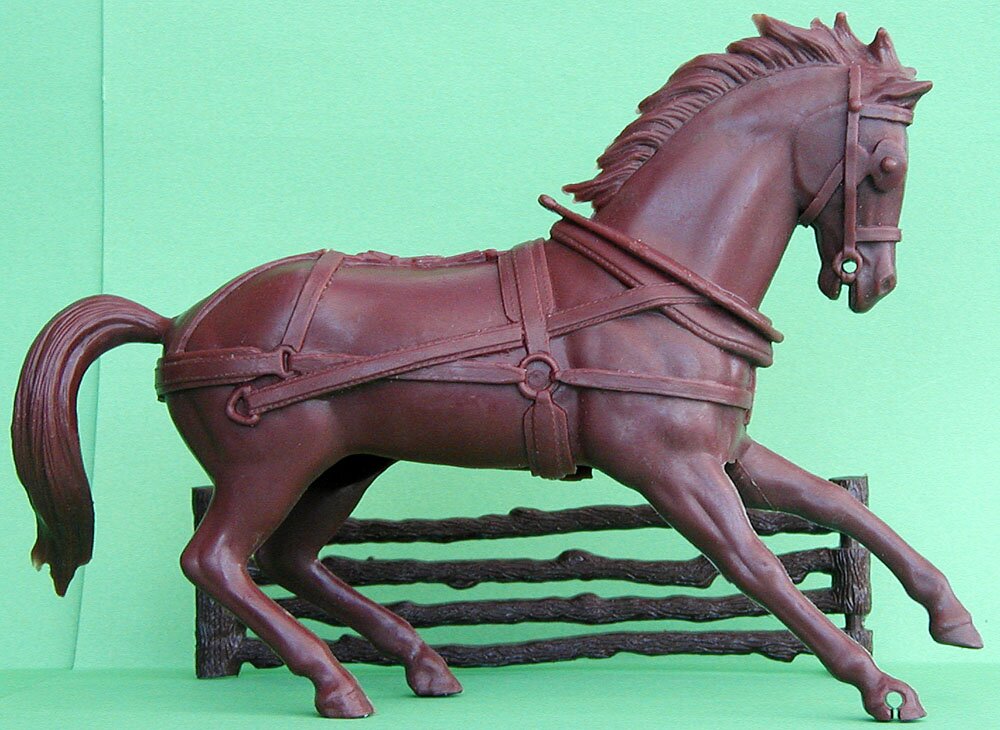 |
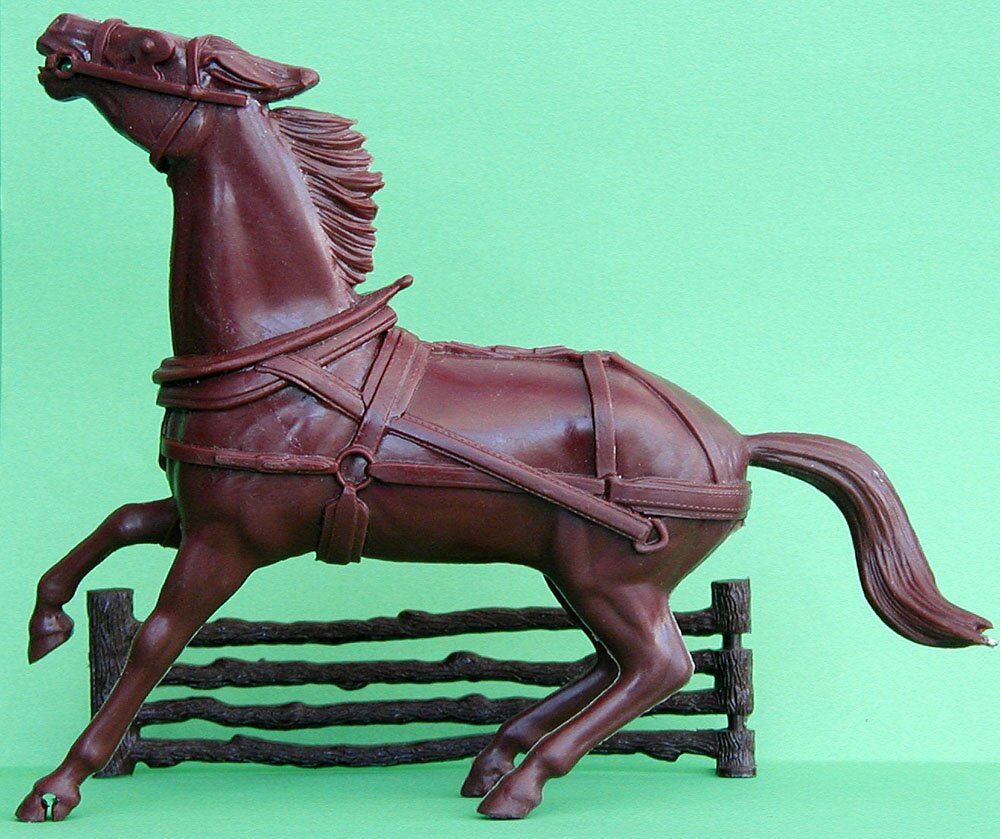 |
| 1. Horse to driver's right - outside view | 2. Horse to driver's left - outside view |
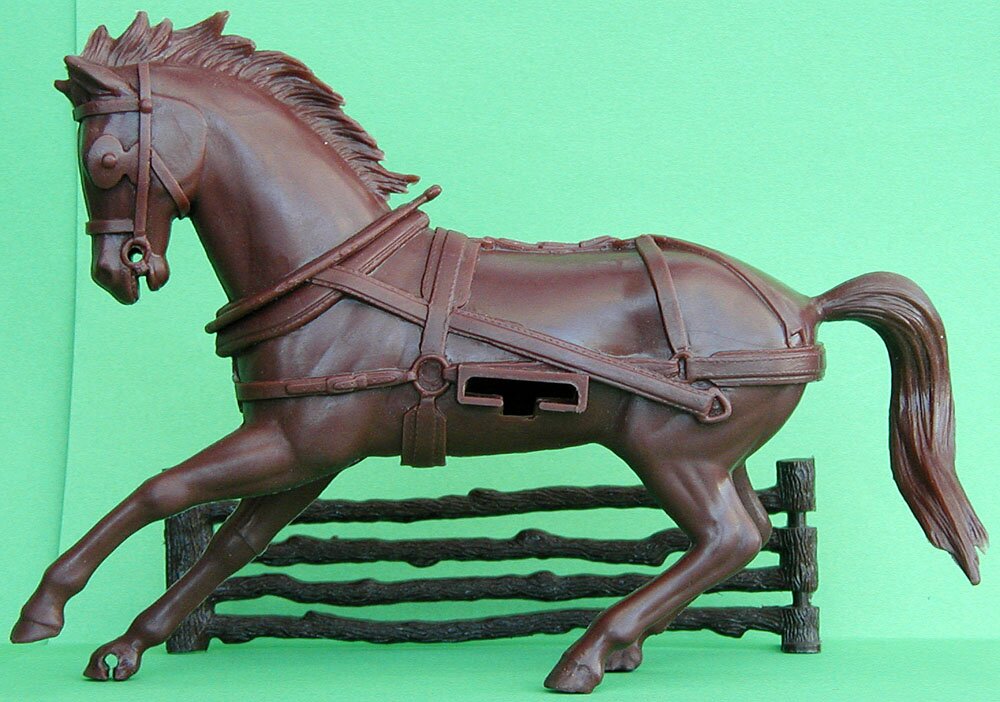 |
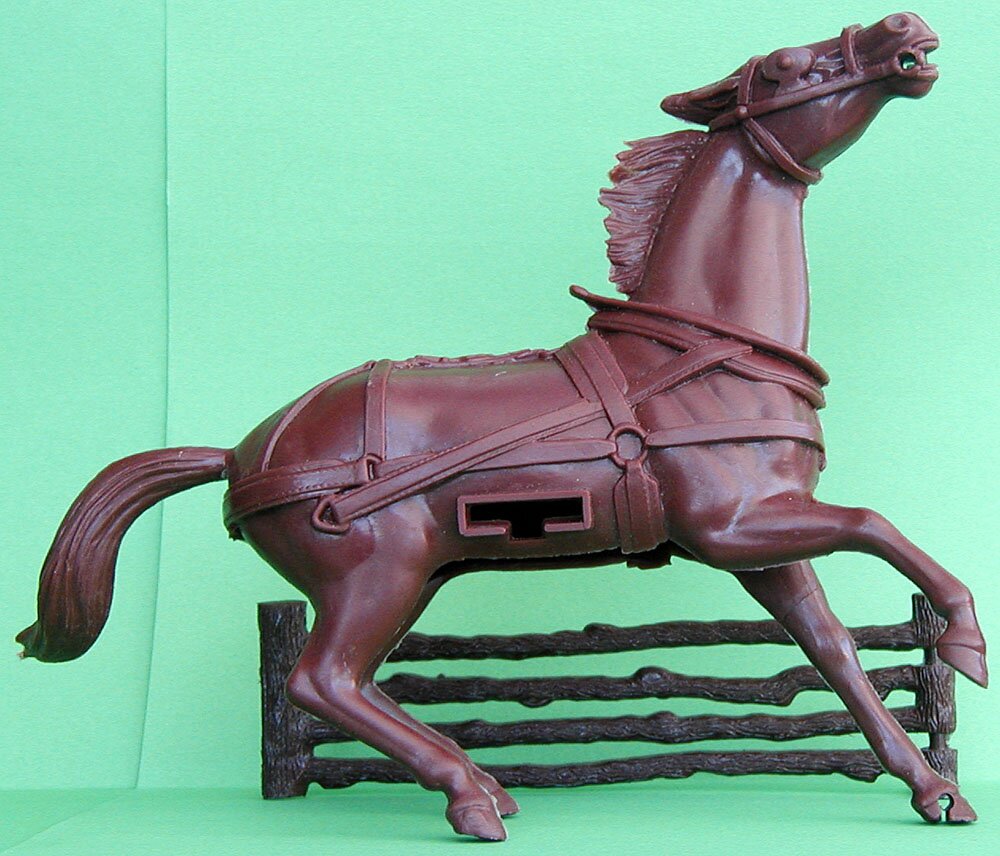 |
| 1. Horse to driver's right - inside view | 2. Horse to driver's left - inside view |